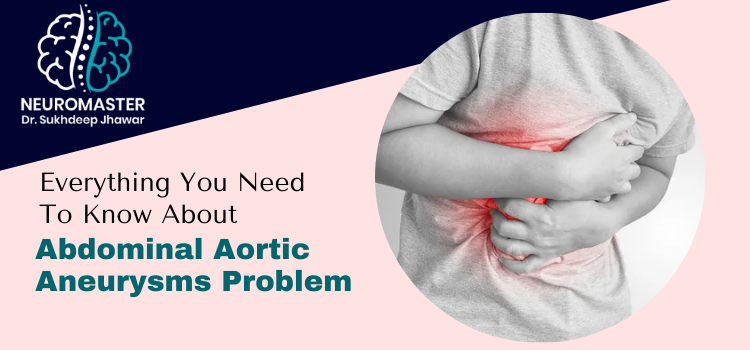Abdominal Aortic Aneurysms (AAAs)
The term aneurysms are referred to as an enlargement or bulge in the artery wall. Arteries are blood vessels that are known for carrying oxygen from the heart and then it goes to the other body parts. The condition is likely to occur when the arteries become weak. Majorly the condition occurs in the aorta.
Although this condition does not create a problem if it is ruptured then it is likely to lead to internal bleeding or sometimes death if the treatment is not started on time. So, you must consult the Best Neurologist in Ludhiana to get yourself the best treatment plan. Dr. Jhawar is a well-known Neurosurgeon In Punjab and under his supervision countless patients have been treated.
Who required screening for AAAs?
- Male between the age of 65 to 70 and they used to smoke in the past
- Female: diagnosed with abdominal aortic aneurysms
- High blood pressure
- Obesity
- High cholesterol
- Peripheral Artery Disease
Note: If the abdominal aortic aneurysm is more than 5.5 cm then it has to be repaired.
What are the types of abdominal aortic aneurysms?
AAAs are divided into types depending on how they grow and their size. The different types are:
- Small AAA (3 cm to 4.4 cm across)
Slight risk of rupture but ultrasound should be done regularly.
- Medium AAA (4.5 cm to 5.4 cm)
In this case, the patient should get the ultrasound every 3 months.
- Large AAA (5.5 cm or larger)
This condition can lead to life-threatening situations. Surgery is required if the patient has bleeding.
What are the causes of abdominal aortic aneurysms?
Although, the exact cause is not known but the condition is likely to increase due to certain factors like:
- Genetic factors
- Hypertension (High blood pressure)
- Vascular inflammatory (vasculitis)
- Smoking
- Atherosclerosis
- Injury or infection
Is it possible to feel abdominal aortic aneurysms?
Usually, the symptoms are not visible till the time it does not reach the condition of rupture. During the test or screening, it will be checked. The most common symptoms of this condition are:
- Fainting or feeling of shock
- Heart rate increases
- Vomiting and nausea
- Dizziness
- Sweaty skin or clammy skin
- Stomach pain which stays for a long time
- Pain reaching the abdomen, buttock, legs, groin, or going to the pelvis
What tests are done to check abdominal aortic aneurysms?
Some of the tests which are done to check the abdominal aortic aneurysms are:
- Abdominal ultrasound
- Chest X-ray
- Computerized tomography (CT) scan
- CT angiogram (CTA) – For surgical planning
What is the treatment for abdominal aortic aneurysms?
If the condition is likely to cause bleeding then surgical intervention is required. On the other hand, if there are no symptoms then surgery is not required. In such a condition, ultrasound tests are done to make sure your condition is checked every 6 months. There are 2 surgical options for this condition which includes:
- Endovascular stent grafting
Less invasive surgery in which a large cut is not needed and recovery is much faster. Grafts are given to help the weak aorta walls to get stabilized. At present, it is the safest approach.
- Open repair
More invasive form, suggested to the patients who have large aneurysms. With this, it takes more time for the patient to recover.
What are the ways to reduce the risk of AAAs?
- Eat healthy
- Exercise daily
- Maintain your weight
- Do not smoke
- Avoid alcohol
- Control stress level
If your condition calls out for a medical emergency then you have to schedule your initial consultation with our doctor.



